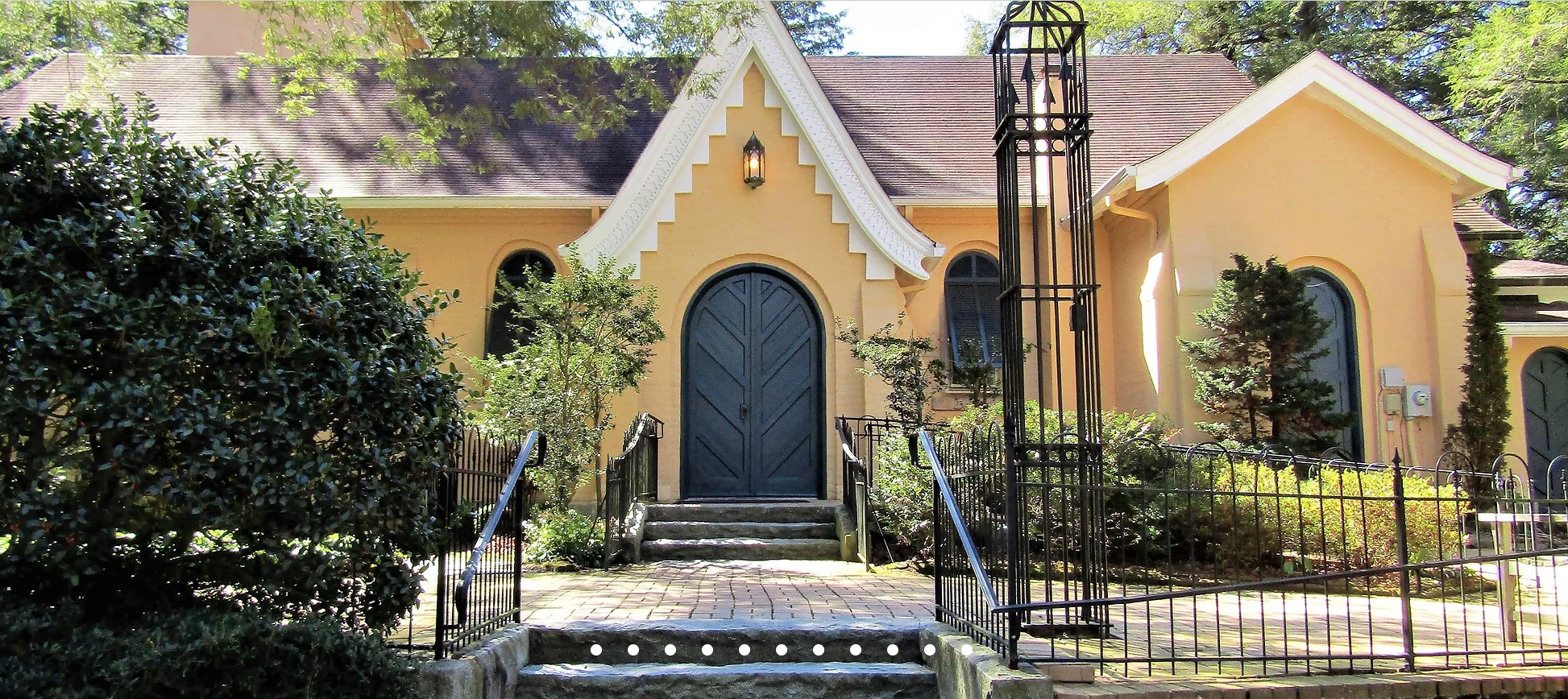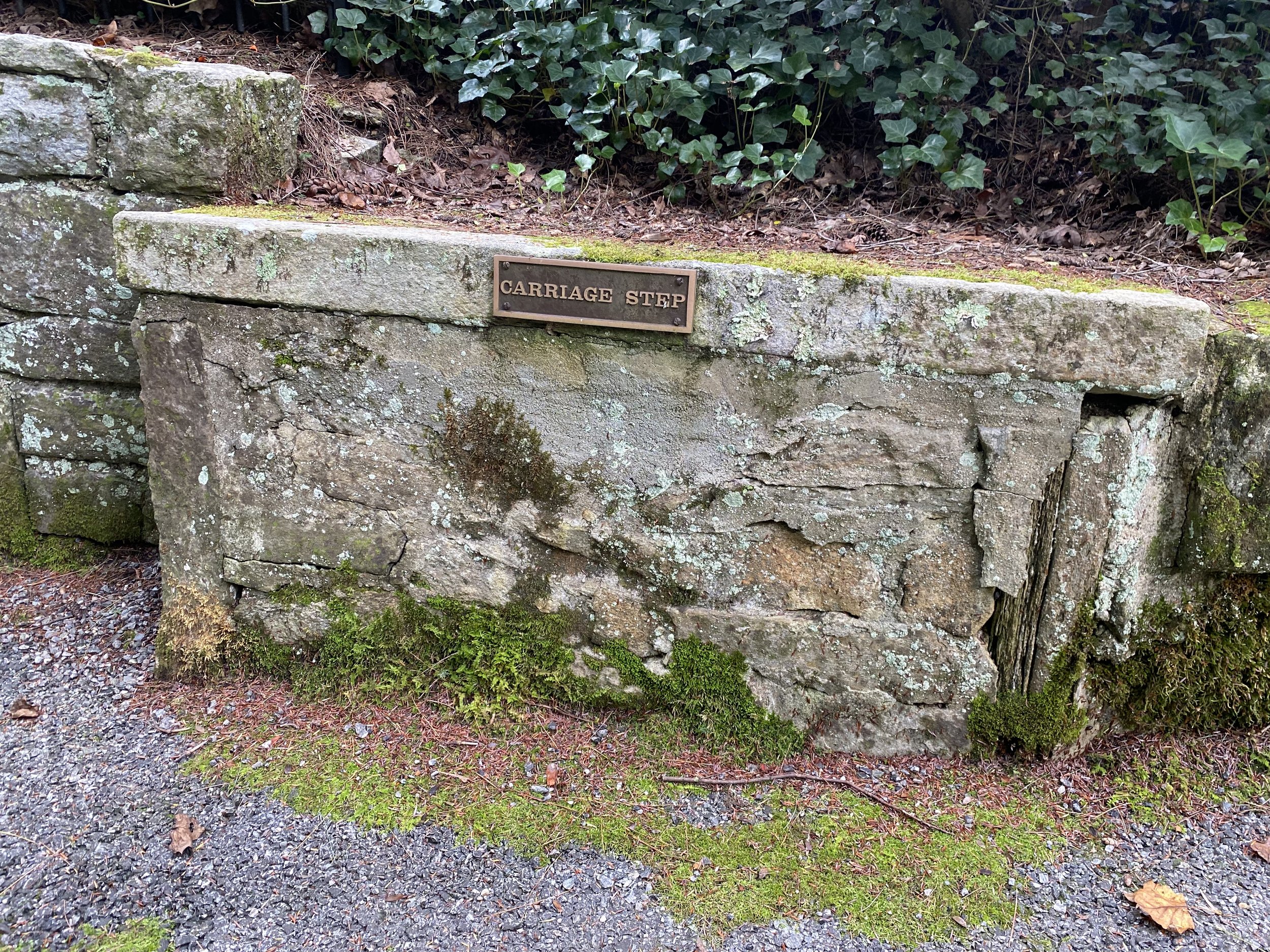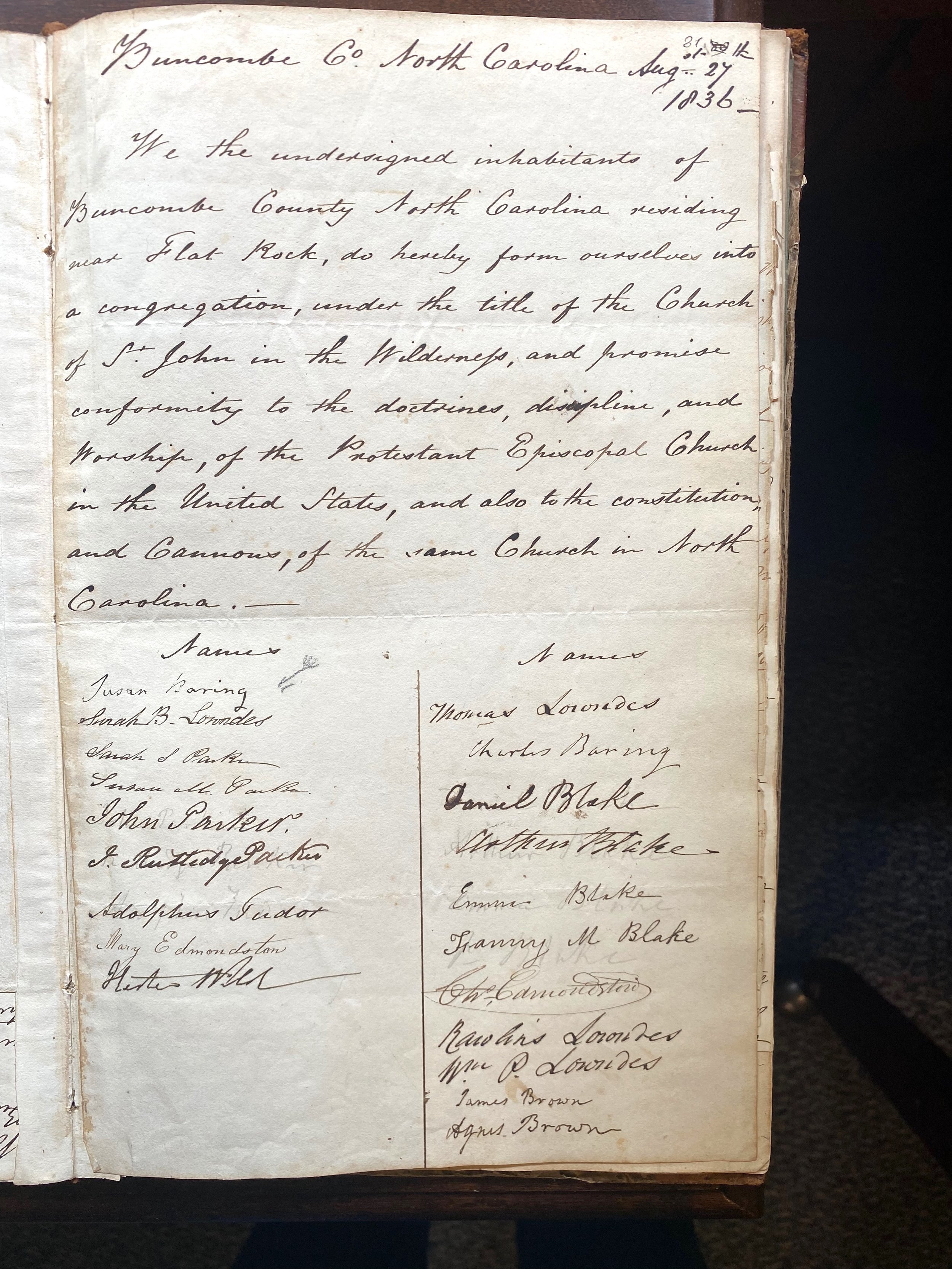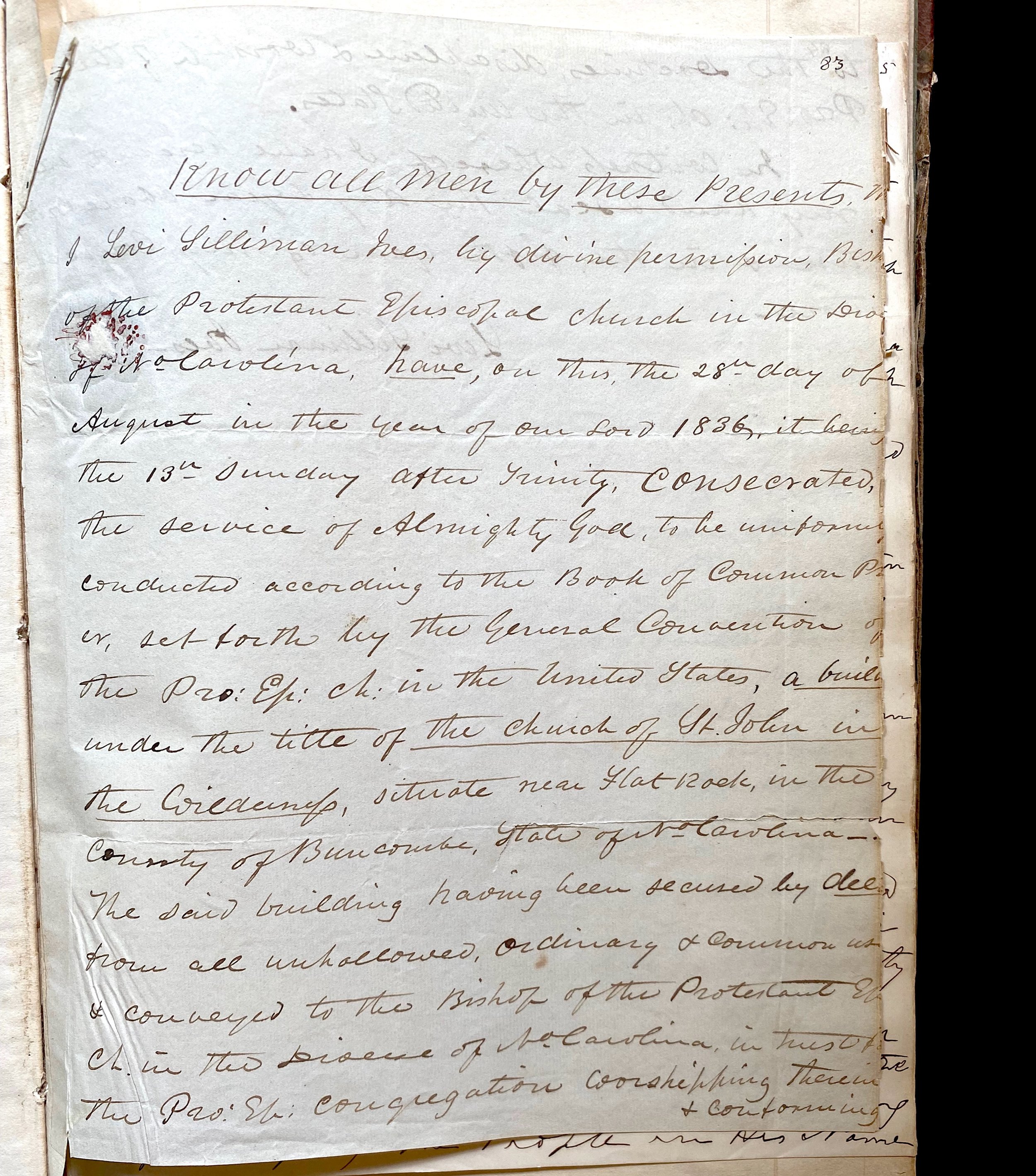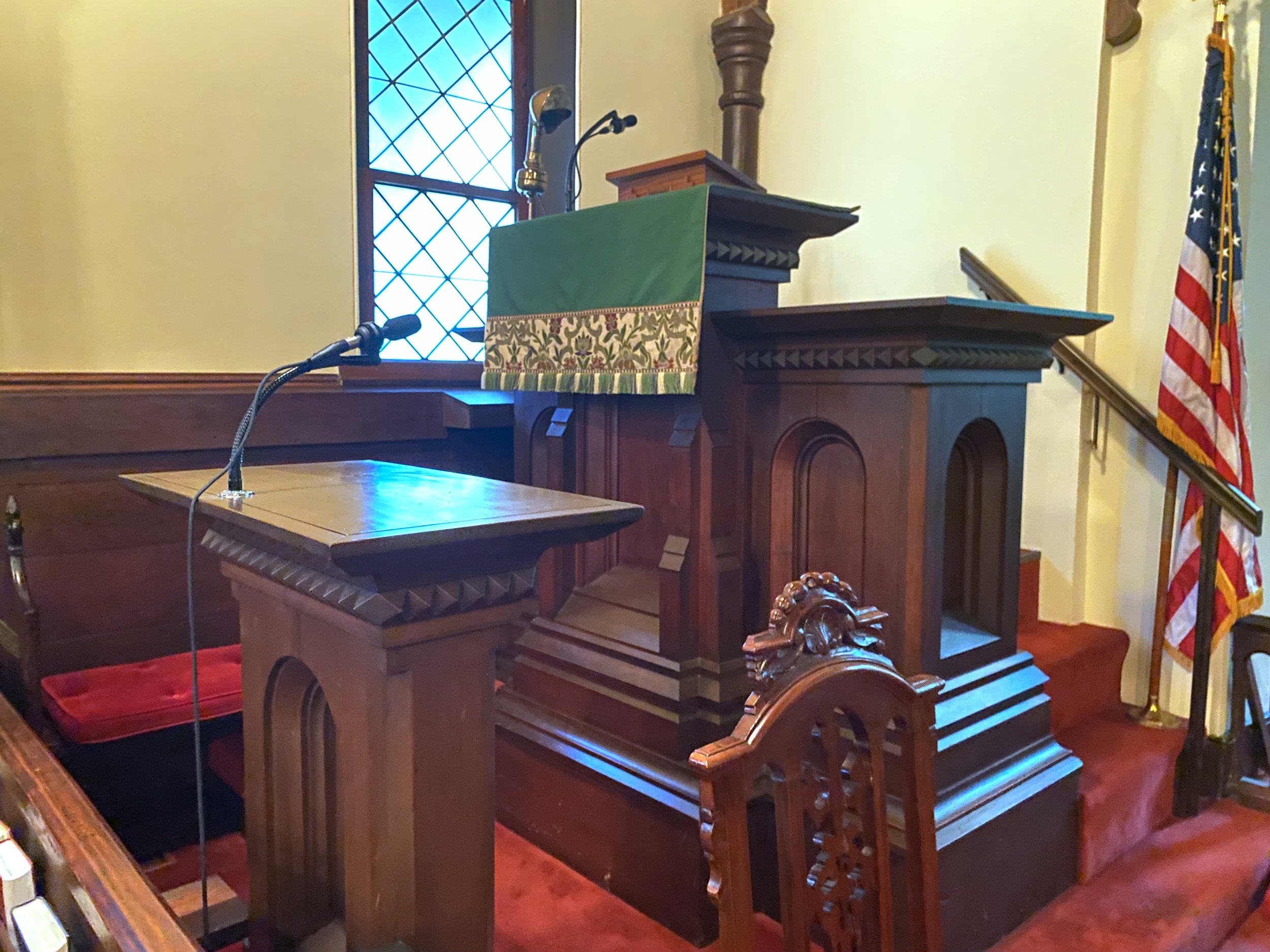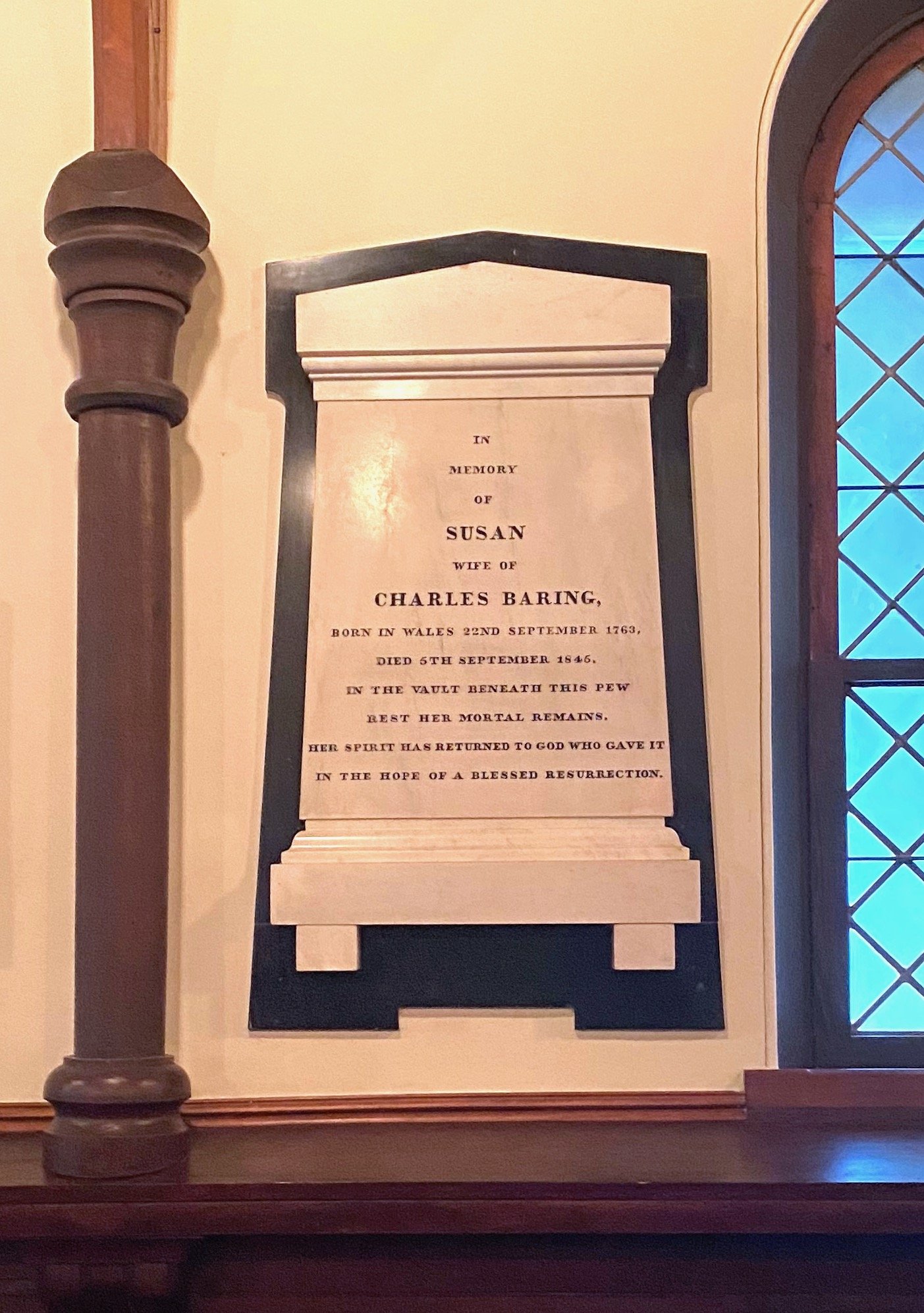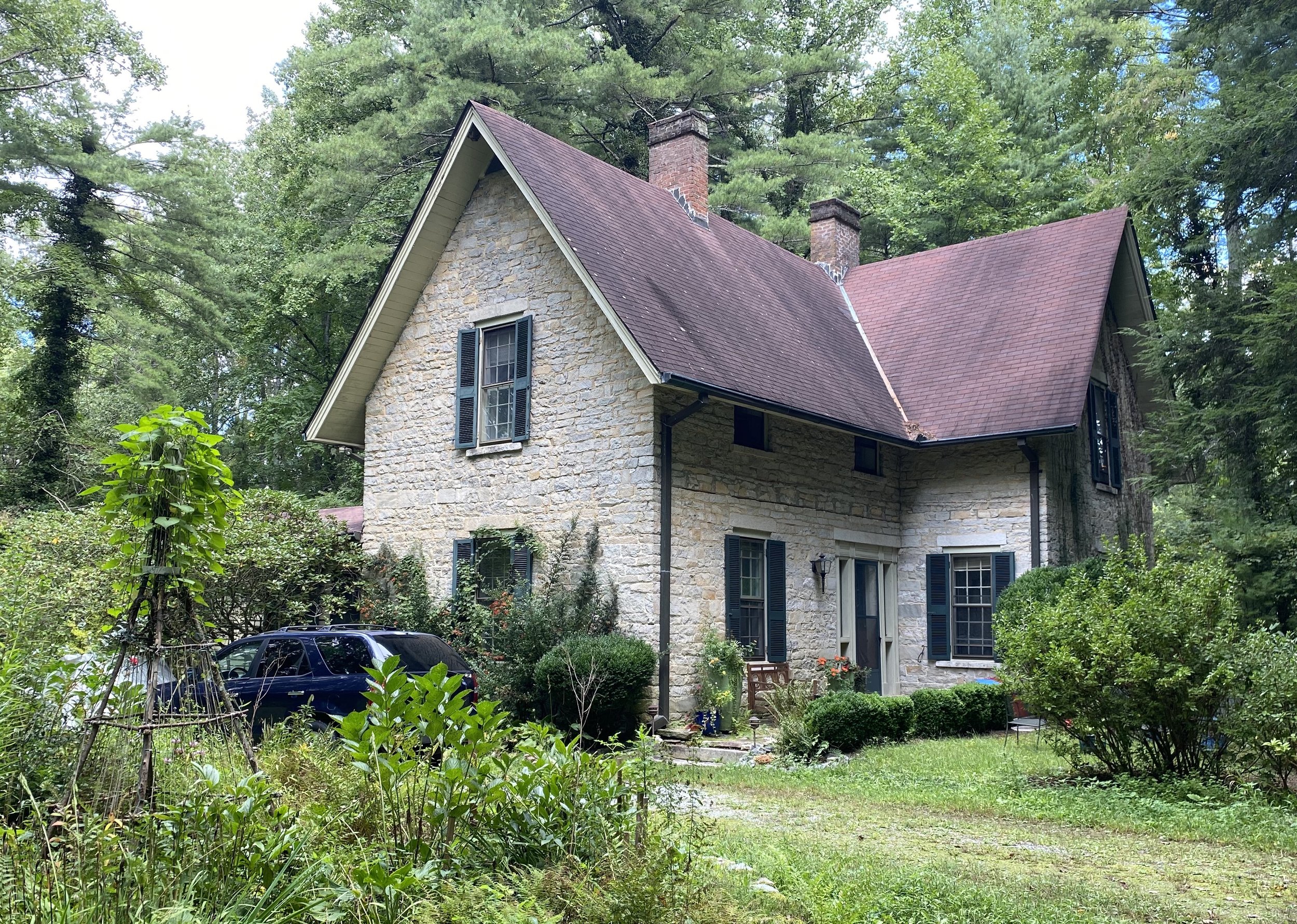A Brief History of The Episcopal Church of St. John in the Wilderness
/by John Barker
Archivist, The Episcopal Church of St. John in the Wilderness
St. John in the Wilderness Episcopal Church
For nearly two centuries the Episcopal Church of St. John in the Wilderness has rested on a wooded knoll in the Village of Flat Rock. What most people likely don’t know is that the building they see today sitting on the corner of Greenville Highway and Rutledge Road is actually the third place of worship to stand on that site.
When Charles and Susan Baring built their summer home, Mountain Lodge, in Flat Rock in the late 1820’s they also built a private chapel, made of wood, as was the custom of the English gentry at the time. Charles was a native of Exeter, England and Susan was born in Wales, but they were, at that time, prominent residents in the Lowcountry of South Carolina near Charleston.
That first chapel burned in a forest fire not long after it was constructed and the Barings rebuilt it, this time of brick. Records suggest that structure was completed in 1833 or 1834. The Barings named their place of worship St. John in the Wilderness, likely after a church of the same name in Exmouth, in Southwest England, where Charles’ family had worshipped for many years.
Letter of Indenture with Bishop Ives’ wax seal. August 27, 1836.
In 1836, Charles and Susan deeded their chapel to the Episcopal Church. Rev. Levi Silliman Ives, Bishop of the Episcopal Diocese of North Carolina, arrived in Flat Rock in August of that year and consecrated the chapel, accepting it as a parish in the Episcopal Church. The original Letter of Indenture--the document certifying the founding of the church, dated August 27, 1836, and containing the Bishop’s signature and wax seal, is preserved in the archives of St. John.
This second structure was relatively small—approximately half the size of the current building--and apparently was not well built. A letter written by Charles Baring to Rev. Charles Cotesworth Pinckney in 1849 stated:
“…I beg to bring to your notice the state of the building as it now stands. The tower entrance if not repaired at the roof before the hard frost sets in will probably tumble down.”
The Altar that had come from England when the church was built in the early 1830’s was installed in the enlarged church and is still used today.
The combination of poor workmanship, along with the need for more pew space owing to the increasing number of Lowcountry residents traveling to the “summer colony” of Flat Rock each year, resulted in that building being torn down and a new, larger church built and completed in 1852. Edward C. Jones, a prominent architect from Charleston, who has had several of his works placed on the U.S. National Register of Historic Places, designed the church. Ephraim Clayton, a contractor from Asheville, was the builder. According to historian, and former St. John member, Louise Bailey, in her book St. John in the Wilderness, the building is of
“…English rural chapel architectural design, with arches, beams and other woodwork being of native timbers. The Altar that had come from England when the church was built in the early 1830’s was installed in the enlarged church and is still used today.”
With only a few minor modifications, the 170-year-old “new” church building is the one that stands today. A Rectory was built adjacent to the church property in 1853, and it too still stands.
Signatures on the Letter of Formation. Susan Baring’s signature is the first on the document.
The early membership of St. John in the Wilderness was primarily made up of merchants, planters, politicians, and other people of means from the Charleston area, as they were the only ones who could afford to build their mountain homes and to be able to make the annual pilgrimage from coastal South Carolina. Names like Rutledge, Memminger, King, Lowndes, Pinckney, Laurens, Middleton, Trenholm, Drayton, Edmondston, and others of renown in South Carolina and national affairs, are included on the early membership rolls of the church. With them they brought their servants, nearly all enslaved people, who also worshipped at St. John.
With nearly all of its members returning to the Lowcountry at the end of the summer season, St. John in the Wilderness, with a few exceptions, operated only during summer months for its first 122 years. Church business continued in the off-season with vestry meetings taking place in members’ homes in Charleston. With more people settling permanently in the Flat Rock area throughout the first half of the 20th century, the church received increasing requests from local Episcopalians to hold services all year. The decision to do so was made in 1958 and St. John has been a year-round church ever since.
Brass plate identifying pew holder E.R. Pinckney.
From its inception, and continuing for many decades, “pew rent” was the major source of financial support for the church. Members would pay varying amounts to stake their claim to a pew. Records from the 1830’s indicate that rents ran between $10 - $30 per year based on the location of the pew; those closer to the front of the church were the most expensive. Pew rents were discontinued around 1960 but the names of the pew holders can still be seen, engraved on brass plates attached to the pews. But they remain only for the sake of nostalgia; “reserved” pews are no longer allowed.
The story of St. John in the Wilderness has been enduringly linked with that of the Flat Rock community for nearly 200 years. With good fortune, that connection will continue for many generations to come. This sentiment is best reflected in the words of historian Louise Bailey:
“Past and present, old and young, are, and have always been, bound together by the common bond of worship. From records kept by those who have brought the church from its beginning to now, this story has developed. But the final chapter of St. John in the Wilderness has not yet been written, and God willing, it never will be.”
John Barker, Archivist
Sources
Louise Bailey, St. John in the Wilderness (1995). Biltmore Press, Asheville, NC
Archives of St. John in the Wilderness








